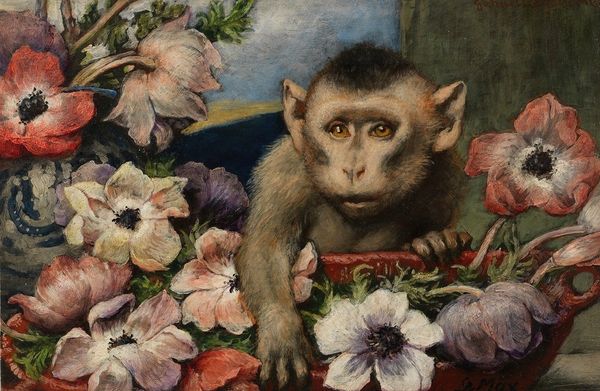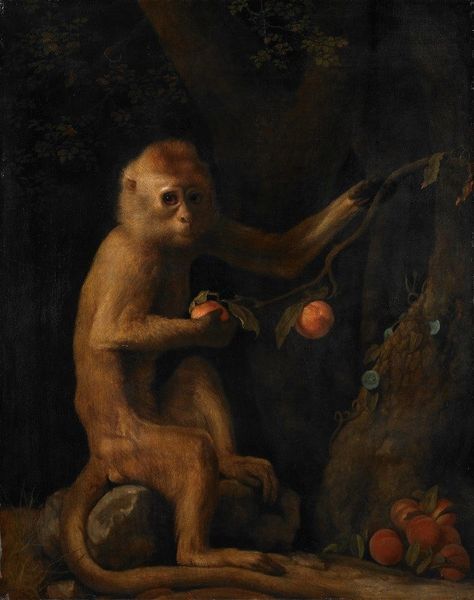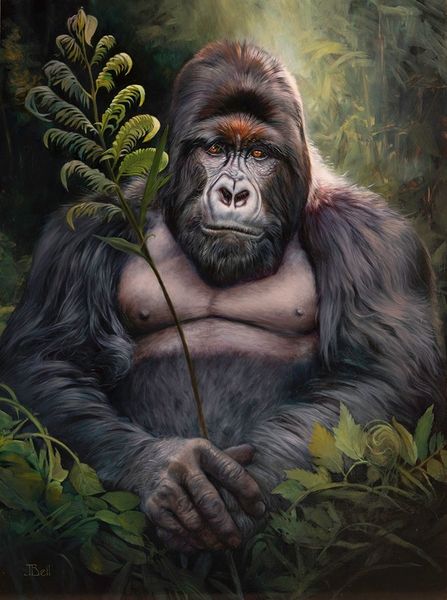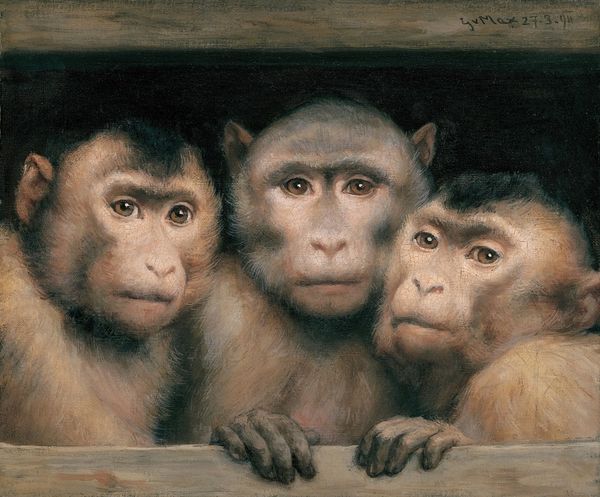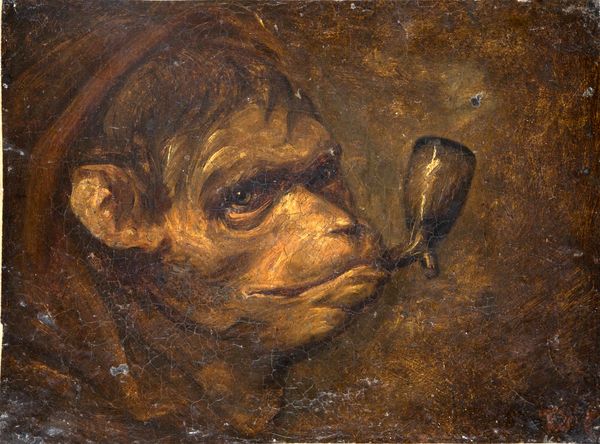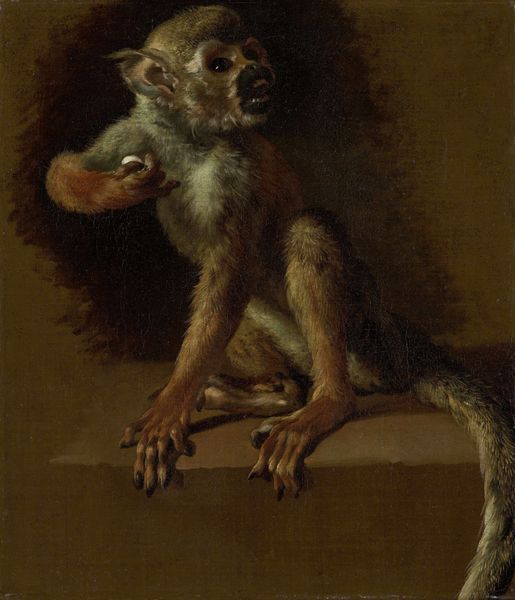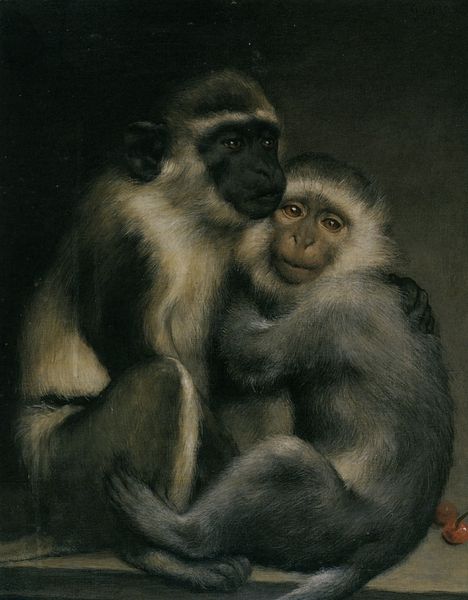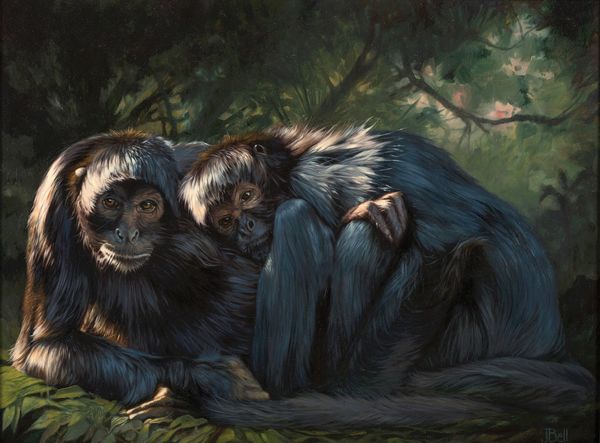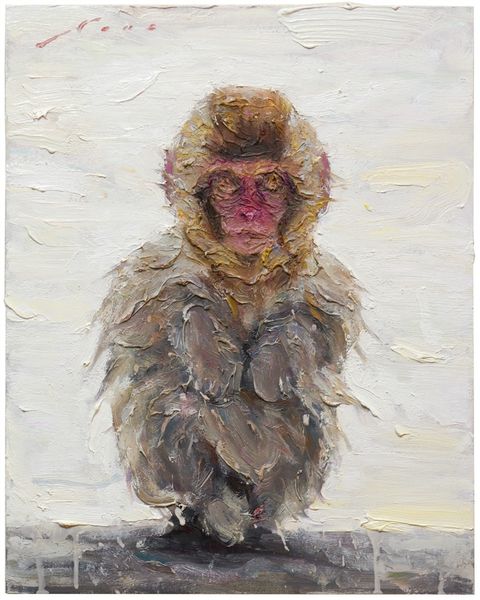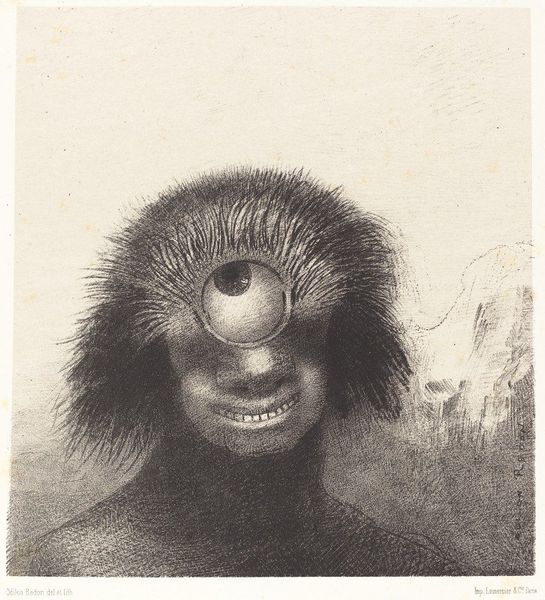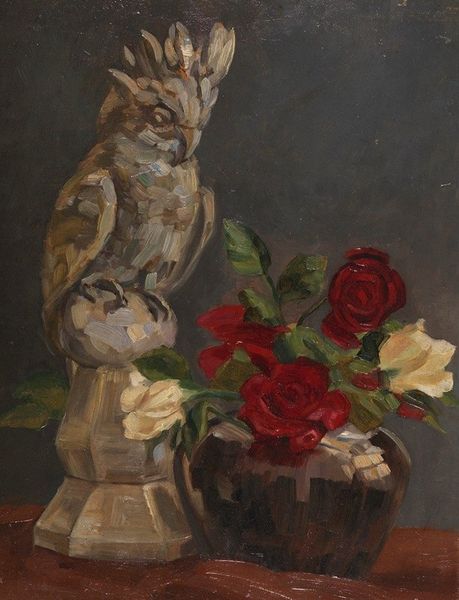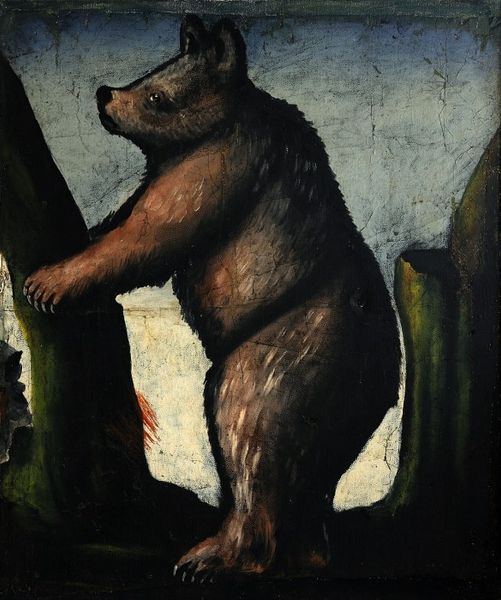
Copyright: Public Domain: Artvee
Editor: Here we have Gabriel von Max's "Monkey with a bouquet of violets", painted in the 1880s with oils. There's something so haunting about this portrait, almost human, and yet undeniably not. How do you interpret this work? Curator: What strikes me is the loaded symbolism here. A monkey, an animal often associated with imitation and the base instincts, presented with violets – a flower symbolizing modesty, faithfulness, and remembrance. The contrast is ripe with potential meanings. What sort of narrative do you suppose that creates? Editor: It feels like a commentary on human nature, perhaps? As though we are not as far removed from our primal selves as we'd like to believe. The violet's symbolism clashes beautifully with the animal subject, complicating our reading. Curator: Precisely! And consider the historical context. In the late 19th century, Darwin's theories were still relatively new and generating intense debate. Presenting the monkey in such a gentle, almost melancholic way could be read as a reflection on humanity’s place in the natural order and our connection to other species. Editor: That’s a perspective I hadn’t considered. So, is it challenging our perception of beauty and intellect by personifying a monkey? Curator: In part, yes. And questioning the very concept of the 'natural' versus the 'civilized.' Von Max uses visual language, carefully chosen imagery, to prompt these deeper reflections. The melancholy expression on the monkey's face is key, imbuing it with a soulfulness we might not expect. Editor: I never thought about that. I am leaving with a whole new level of understanding. Curator: Excellent. Works of art are meant to trigger thought. By noticing the way we respond to symbolic messaging in an image we begin to discern underlying psychological, anthropological, historical, or cultural realities that the imagery alludes to.
Comments
No comments
Be the first to comment and join the conversation on the ultimate creative platform.
